Abstract
The ventilatory functions (forced vital capacity, forced expiratory volume in one second, and peak expiratory flow rate) of West Pakistani immigrants working near Manchester were measured. There were 198 `normal' healthy adult workers aged 25 to 60 years and 129 workers aged 16 to 24 years. The subjects were considered `normal' if they did not admit to persistent cough and phlegm. The regression equations on age and height for the two groups are presented together with the corresponding nomograms for the adult group.
Ventilatory function reached its maximum between the ages of 25 and 30 years; smokers and dust-exposed subjects did not differ significantly from non-smokers and non-dust-exposed subjects (P>0·1). This was probably due to their relatively light smoking habits and the short duration of dust exposure. The effects of age, in workers over the age of 25 years, and the predominant effects of height on the FVC, FEV1·0, and PEFR are similar to those found in other studies.
The ventilatory capacity of the subjects was found to be somewhat lower than that of Caucasians, about equal to that of Negroes living in America, and higher than that of Indians of Asian origin living in Guyana or of Bantu Negroes in South Africa.
The predicted FEV1·0/FVC% in the West Pakistani subjects is a little higher than any calculated from the results of other authors, but its regression on age is consistent with the findings of other studies and, therefore, can be used in clinical practice to assess the pulmonary conductance.
Full text
PDF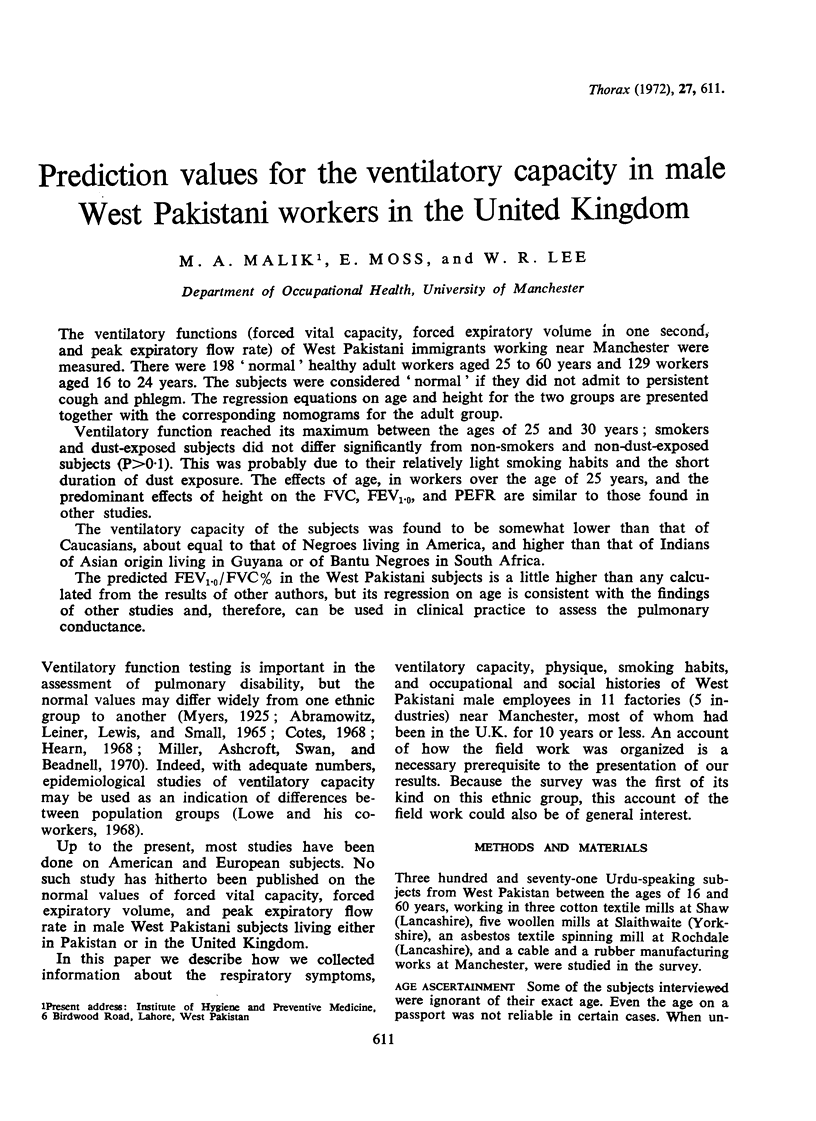
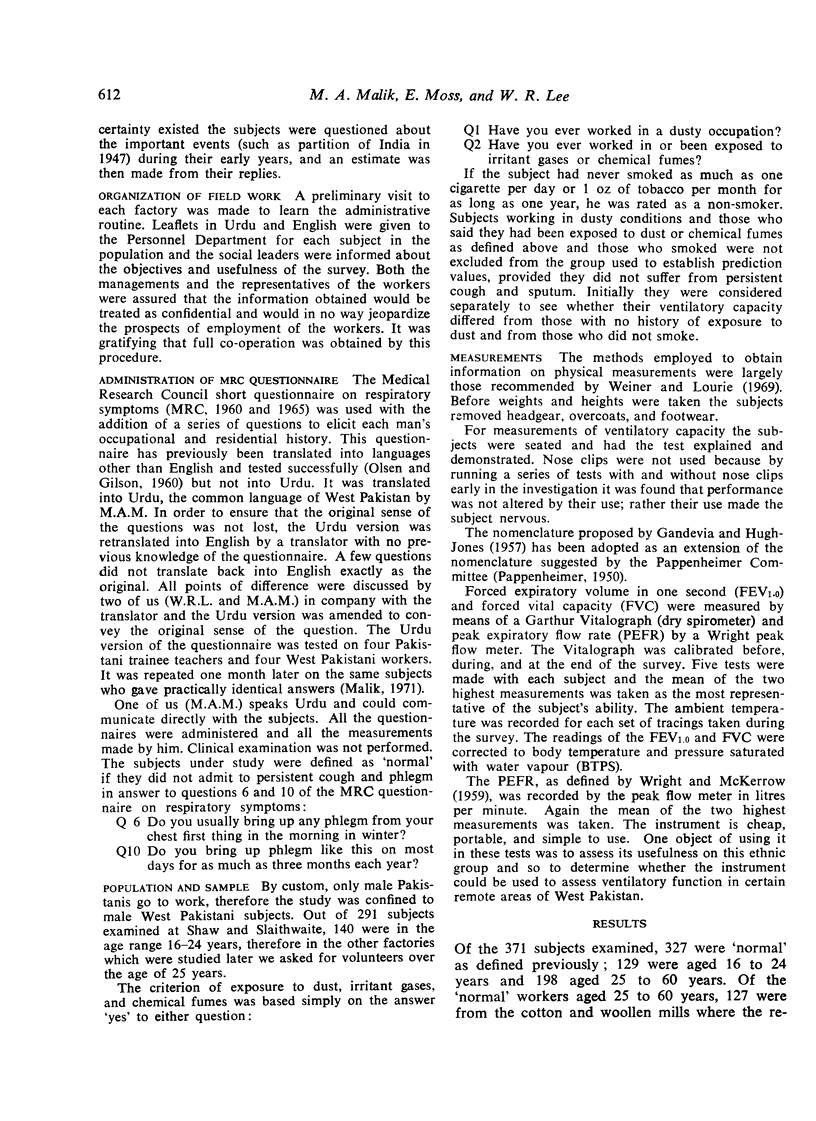
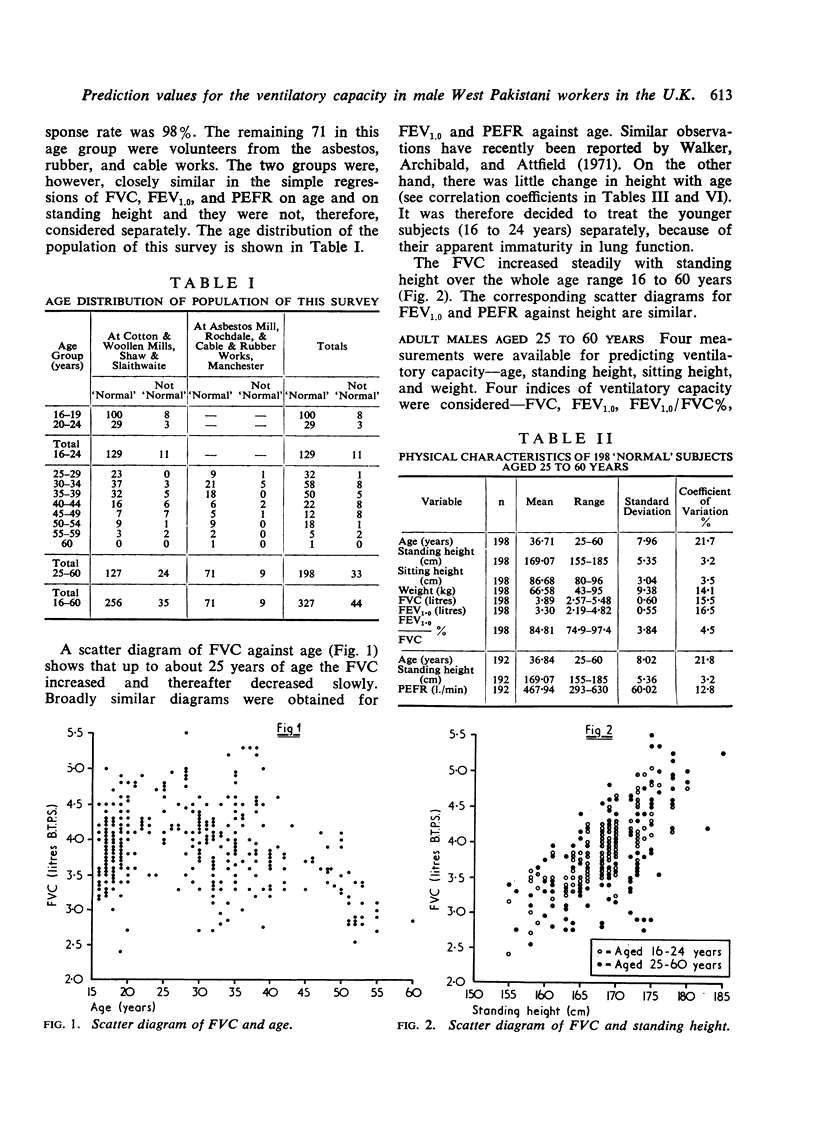
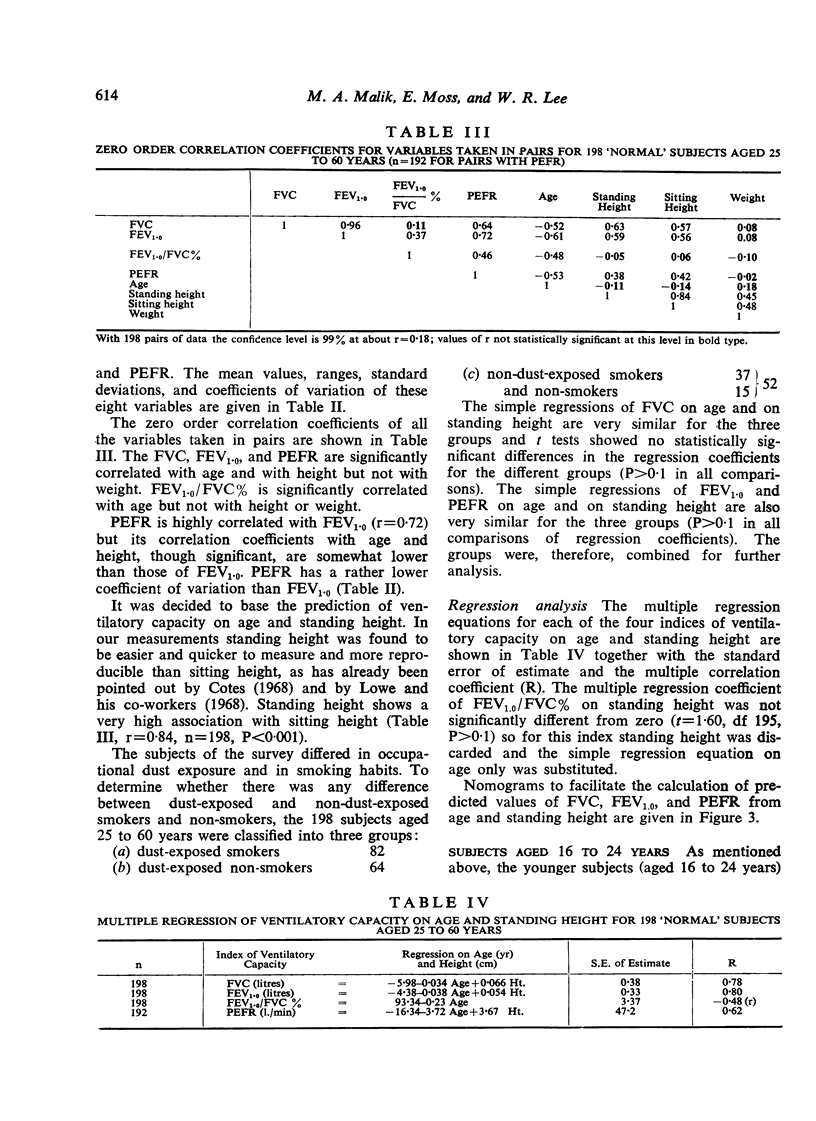
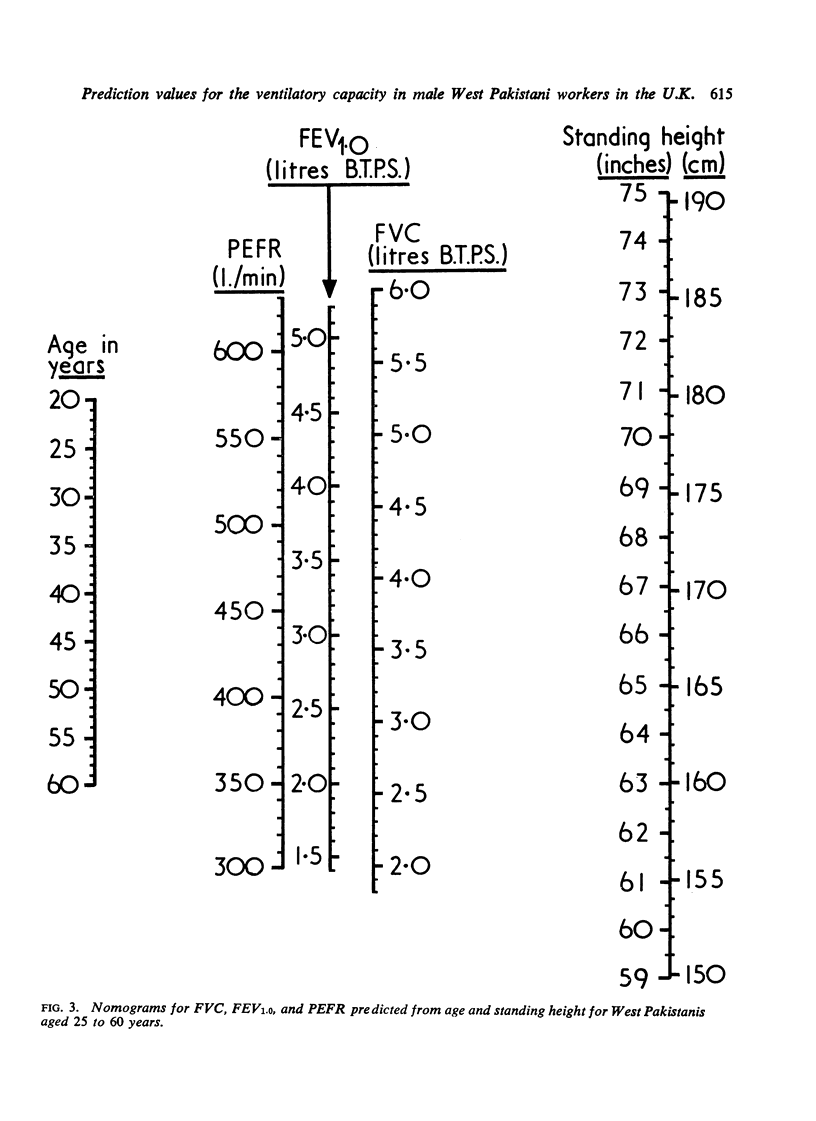
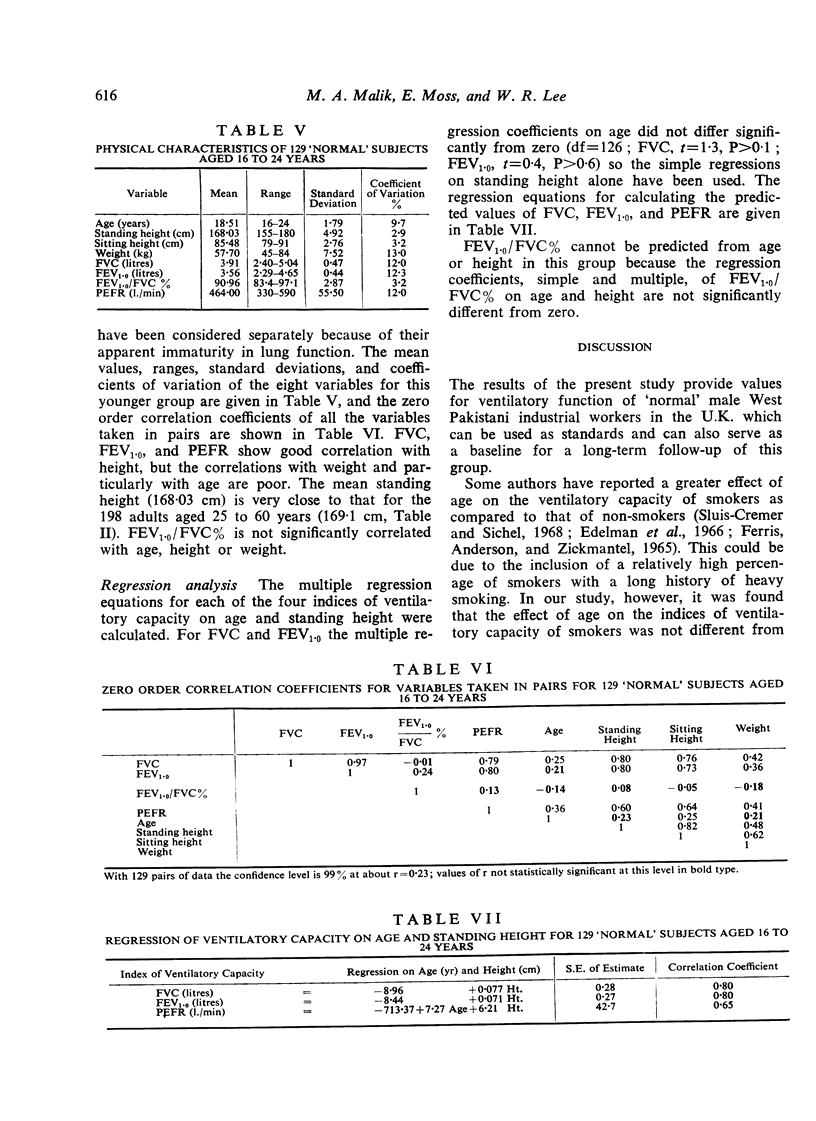
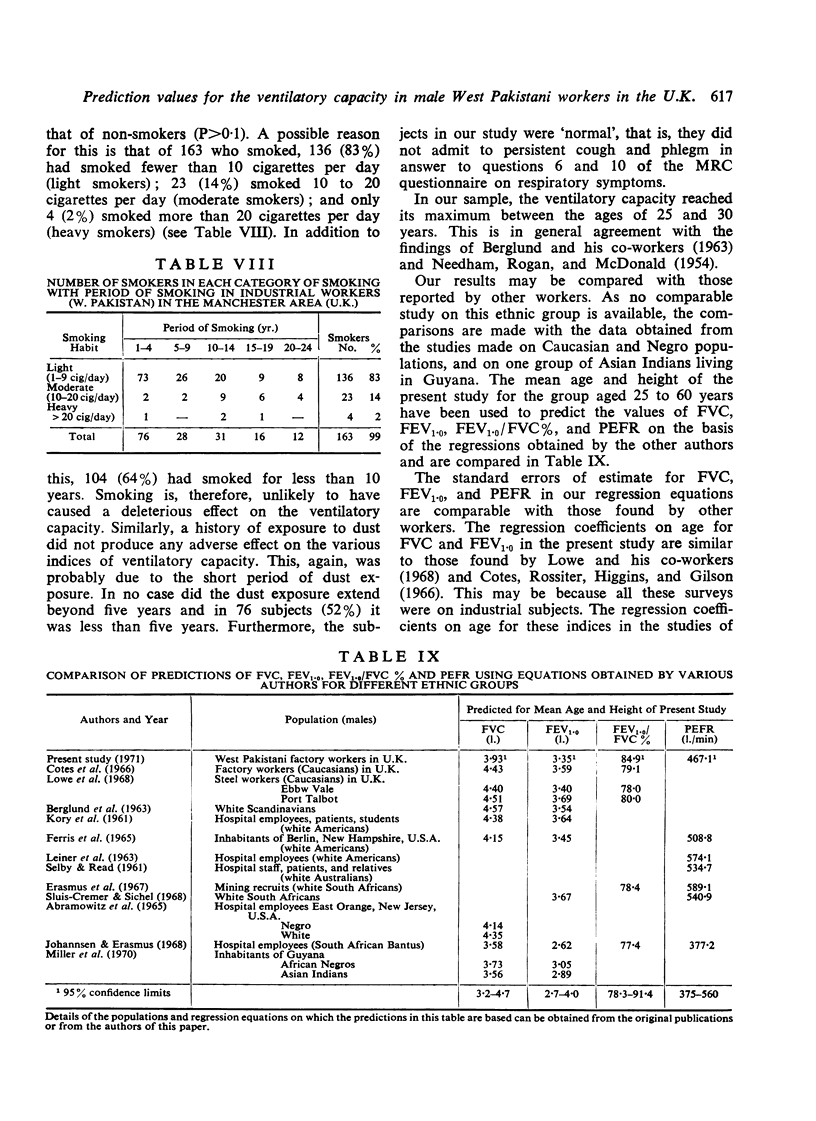
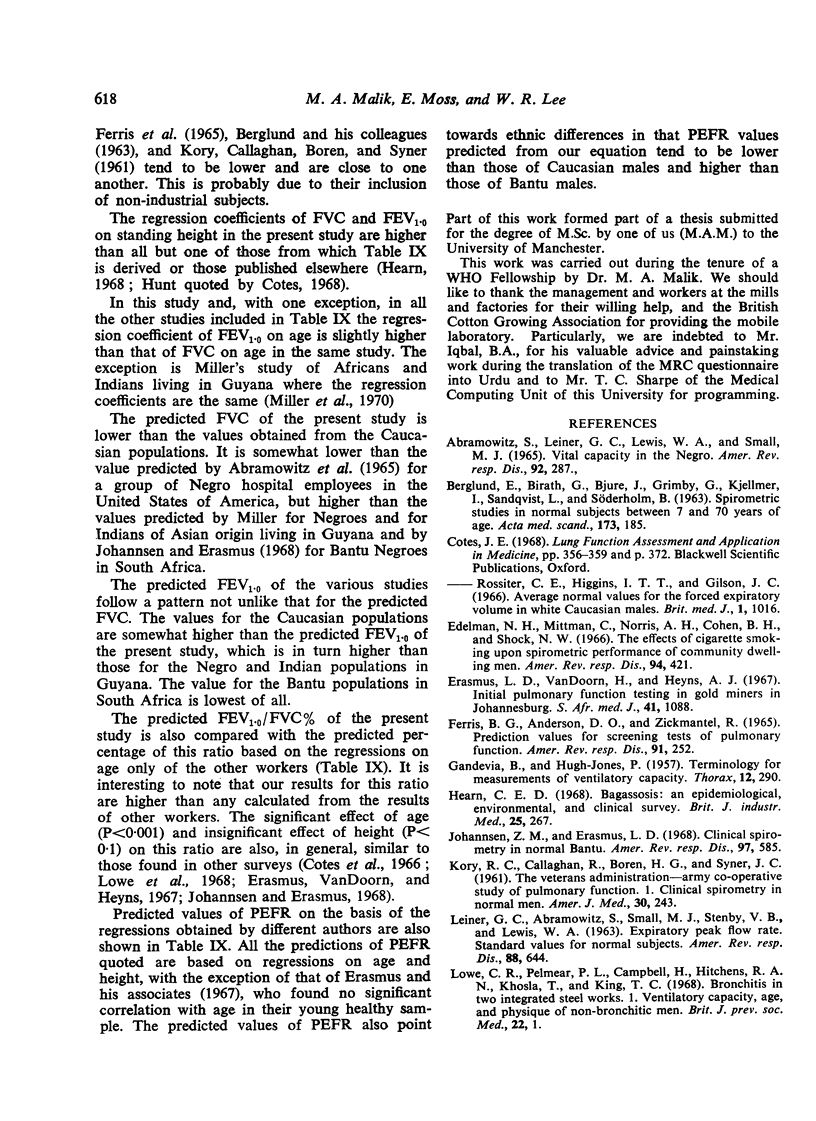
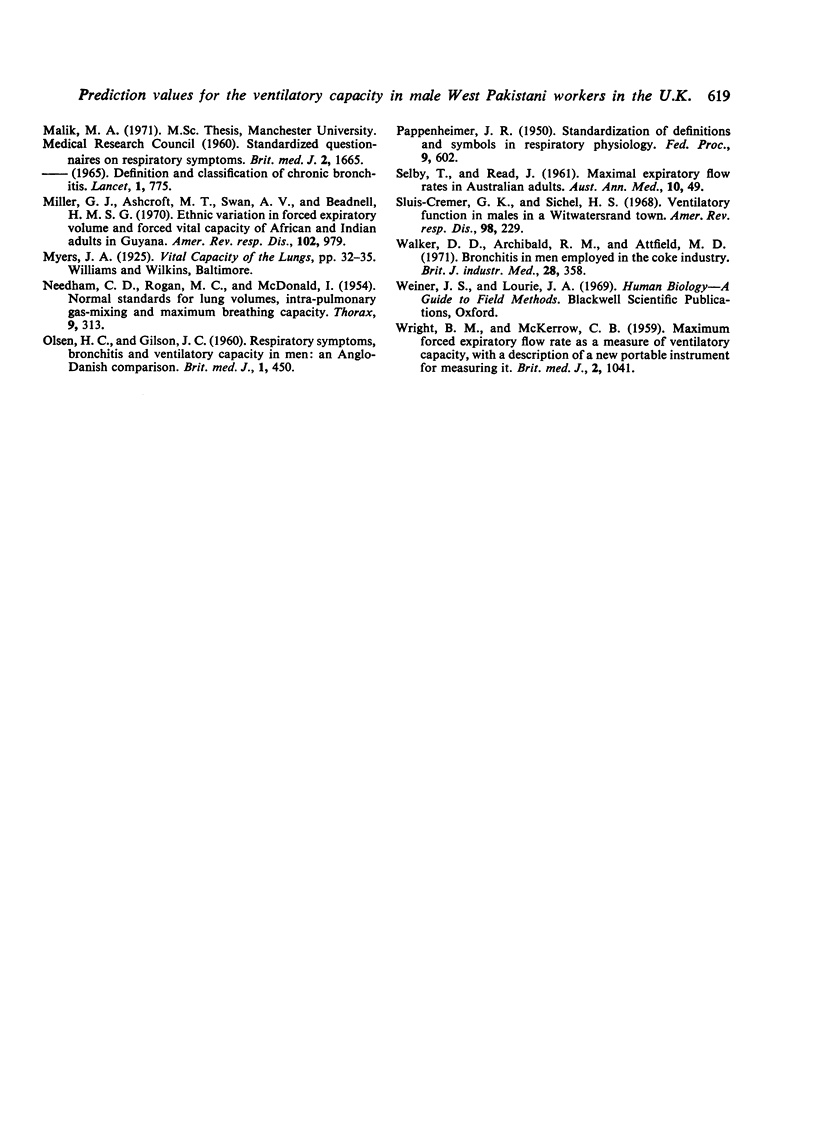
Selected References
These references are in PubMed. This may not be the complete list of references from this article.
- ABRAMOWITZ S., LEINER G. C., LEWIS W. A., SMALL M. J. VITAL CAPACITY IN THE NEGRO. Am Rev Respir Dis. 1965 Aug;92:287–292. doi: 10.1164/arrd.1965.92.2.287. [DOI] [PubMed] [Google Scholar]
- BERGLUND E., BIRATH G., BJURE J., GRIMBY G., KJELLMER I., SANDQVIST L., SODERHOLM B. Spirometric studies in normal subjects. I. Forced expirograms in subjects between 7 and 70 years of age. Acta Med Scand. 1963 Feb;173:185–192. [PubMed] [Google Scholar]
- Cotes J. E., Rossiter C. E., Higgins I. T., Gilson J. C. Average normal values for the forced expiratory volume in white Caucasian males. Br Med J. 1966 Apr 23;1(5494):1016–1019. doi: 10.1136/bmj.1.5494.1016. [DOI] [PMC free article] [PubMed] [Google Scholar]
- Edelman N. H., Mittman C., Norris A. H., Cohen B. H., Shock N. W. The effects of cigarette smoking upon spirometric performance of community dwelling men. Am Rev Respir Dis. 1966 Sep;94(3):421–429. doi: 10.1164/arrd.1966.94.3.421. [DOI] [PubMed] [Google Scholar]
- Erasmus L. D., van Doorn H., Heyns A. J. Initial pulmonary function testing in gold miners in Johannesburg. S Afr Med J. 1967 Nov 4;41(42):1088–1093. [PubMed] [Google Scholar]
- FERRIS B. G., Jr, ANDERSON D. O., ZICKMANTEL R. PREDICTION VALUES FOR SCREENING TESTS OF PULMONARY FUNCTION. Am Rev Respir Dis. 1965 Feb;91:252–261. doi: 10.1164/arrd.1965.91.2.252. [DOI] [PubMed] [Google Scholar]
- GANDEVIA B., HUGH-JONES P. Terminology for measurements of ventilatory capacity; a report to the thoracic society. Thorax. 1957 Dec;12(4):290–293. doi: 10.1136/thx.12.4.290. [DOI] [PMC free article] [PubMed] [Google Scholar]
- Hearn C. E. Bagassosis: an epidemiological, environmental, and clinical survey. Br J Ind Med. 1968 Oct;25(4):267–282. doi: 10.1136/oem.25.4.267. [DOI] [PMC free article] [PubMed] [Google Scholar]
- Johannsen Z. M., Erasmus L. D. Clinical spirometry in normal Bantu. Am Rev Respir Dis. 1968 Apr;97(4):585–597. doi: 10.1164/arrd.1968.97.4.585. [DOI] [PubMed] [Google Scholar]
- KORY R. C., CALLAHAN R., BOREN H. G., SYNER J. C. The Veterans Administration-Army cooperative study of pulmonary function. I. Clinical spirometry in normal men. Am J Med. 1961 Feb;30:243–258. doi: 10.1016/0002-9343(61)90096-1. [DOI] [PubMed] [Google Scholar]
- LEINER G. C., ABRAMOWITZ S., SMALL M. J., STENBY V. B., LEWIS W. A. EXPIRATORY PEAK FLOW RATE. STANDARD VALUES FOR NORMAL SUBJECTS. USE AS A CLINICAL TEST OF VENTILATORY FUNCTION. Am Rev Respir Dis. 1963 Nov;88:644–651. doi: 10.1164/arrd.1963.88.5.644. [DOI] [PubMed] [Google Scholar]
- Lowe C. R., Pelmear P. L., Campbell H., Hitchens R. A., Khosla T., King T. C. Bronchitis in two integrated steel works. I. Ventilatory capacity, age, and physique of non-bronchitic men. Br J Prev Soc Med. 1968 Jan;22(1):1–11. doi: 10.1136/jech.22.1.1. [DOI] [PMC free article] [PubMed] [Google Scholar]
- Miller G. J., Ashcroft M. T., Swan A. V., Beadnell H. M. Ethnic variation in forced expiratory volume and forced vital capacity of African and Indian adults in Guyana. Am Rev Respir Dis. 1970 Dec;102(6):979–981. doi: 10.1164/arrd.1970.102.6.979. [DOI] [PubMed] [Google Scholar]
- NEEDHAM C. D., ROGAN M. C., McDONALD I. Normal standards for lung volumes, intrapulmonary gas-mixing, and maximum breathing capacity. Thorax. 1954 Dec;9(4):313–325. doi: 10.1136/thx.9.4.313. [DOI] [PMC free article] [PubMed] [Google Scholar]
- OLSEN H. C., GILSON J. C. Respiratory symptoms, bronchitis, and ventilatory capacity in men. An Anglo-Danish comparison, with special reference to differences in smoking habits. Br Med J. 1960 Feb 13;1(5171):450–456. doi: 10.1136/bmj.1.5171.450. [DOI] [PMC free article] [PubMed] [Google Scholar]
- SELBY T., READ J. Maximal expiratory flow rates in Australian adults. Australas Ann Med. 1961 Feb;10:49–51. doi: 10.1111/imj.1961.10.1.49. [DOI] [PubMed] [Google Scholar]
- STANDARDIZATION of definitions and symbols in respiratory physiology. Fed Proc. 1950 Sep;9(3):602–605. [PubMed] [Google Scholar]
- Sluis-Cremer G. K., Sichel H. S. Ventilatory function in males in a Witwatersrand town. Comparison between smokers and nonsmokers. Am Rev Respir Dis. 1968 Aug;98(2):229–239. doi: 10.1164/arrd.1968.98.2.229. [DOI] [PubMed] [Google Scholar]
- WRIGHT B. M., McKERROW C. B. Maximum forced expiratory flow rate as a measure of ventilatory capacity: with a description of a new portable instrument for measuring it. Br Med J. 1959 Nov 21;2(5159):1041–1046. doi: 10.1136/bmj.2.5159.1041. [DOI] [PMC free article] [PubMed] [Google Scholar]
- Walker D. D., Archibald R. M., Attfield M. D. Bronchitis in men employed in the coke industry. Br J Ind Med. 1971 Oct;28(4):358–363. doi: 10.1136/oem.28.4.358. [DOI] [PMC free article] [PubMed] [Google Scholar]


